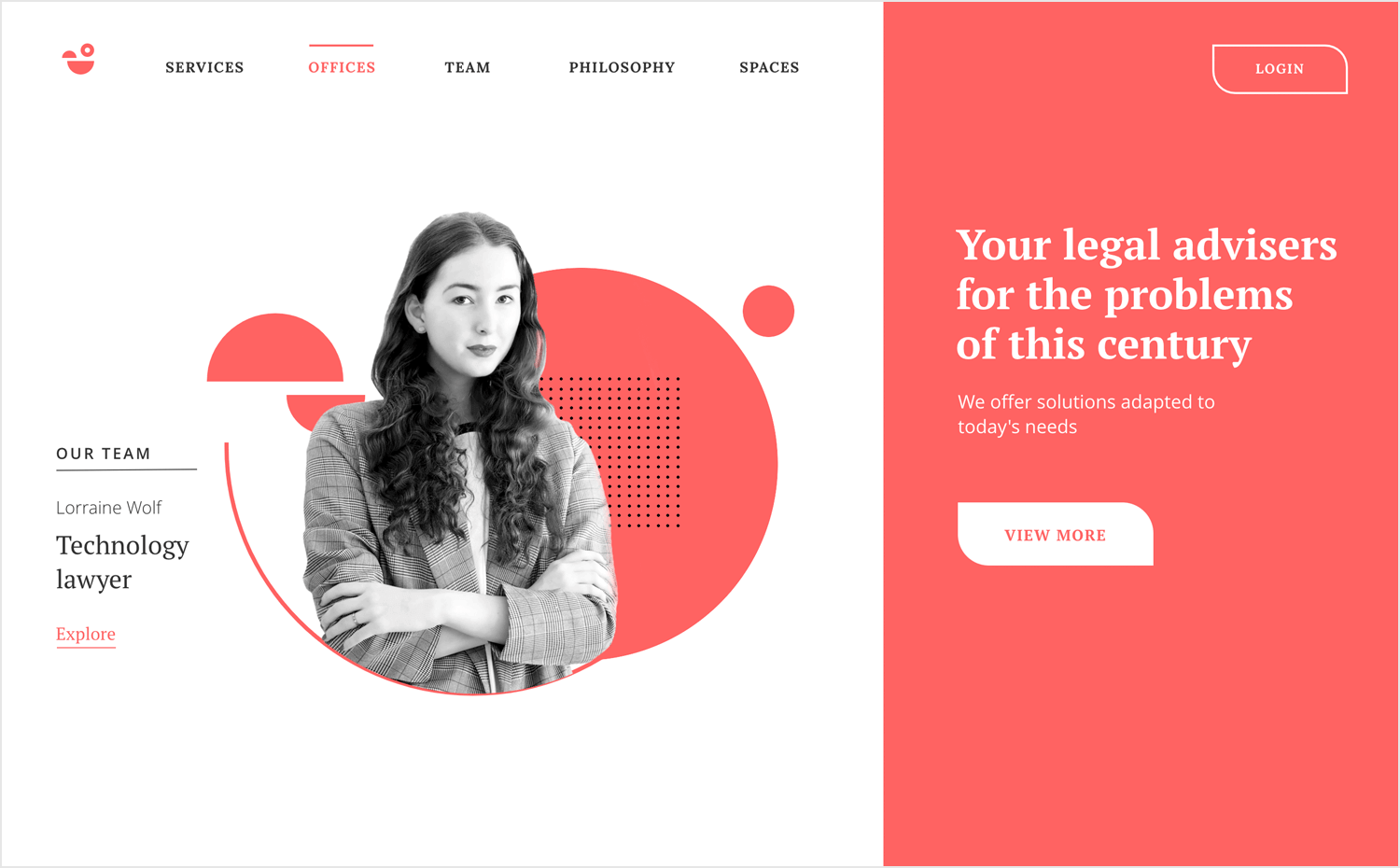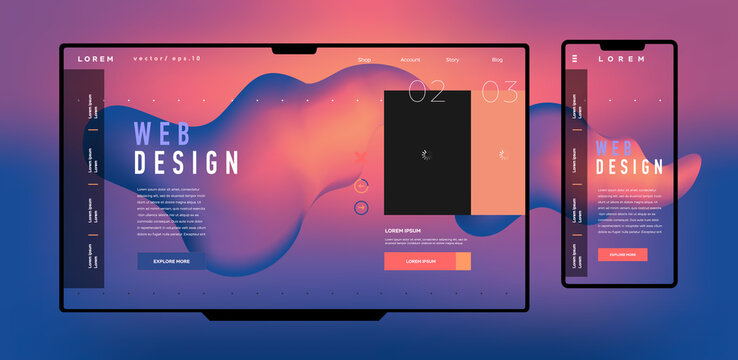Top Resources for Understanding Advanced Website Design Techniques
Top Resources for Understanding Advanced Website Design Techniques
Blog Article
The Power of User-Centered Site Layout in Expanding Your Online Target Market
Effective style concepts-- such as intuitive navigation and availability-- are important in fostering user fulfillment and commitment. What strategies can companies adopt to ensure their layouts resonate with individuals and ultimately drive development?

Understanding User-Centered Design
User-Centered Style (UCD) is a basic method to web site advancement that focuses on the requirements, preferences, and behaviors of end customers throughout the design process. This approach highlights understanding customers deeply-- with research study techniques such as interviews, surveys, and use screening-- to develop a site that resonates with them. By incorporating individual responses at every stage, designers can make sure that the end product straightens carefully with customer assumptions.
UCD promotes repetitive style, where models are evaluated and fine-tuned based upon user communications and experiences. This cycle not only enhances usability however also cultivates a sense of ownership among customers, as they feel their input is valued and impactful. Additionally, UCD helps identify possible barriers and pain points in the user trip, permitting developers to resolve these obstacles proactively.
Inevitably, welcoming UCD causes sites that are a lot more instinctive, engaging, and reliable. By positioning users at the facility of the style process, organizations can develop electronic experiences that not only bring in yet also retain their target audience, driving higher complete satisfaction and commitment. In an affordable on-line landscape, this method is vital for attaining sustained success.
Trick Principles of Customer Experience
An effective customer experience (UX) pivots on several essential concepts that direct the design procedure and enhance interaction between customers and the web site. Usability is vital; the site should be instinctive, permitting customers to browse quickly and locate info promptly. This includes clear labeling and a sensible structure that reduces cognitive lots.
Secondly, ease of access plays a critical role in making sure that all individuals, regardless of their abilities or impairments, can successfully engage with the site. Including alt text for images, key-board navigating, and screen viewers compatibility promotes inclusivity.
Consistency is one more vital principle. A cohesive style language, from shade schemes to typography, helps users build knowledge and depend on with the site (Website Design). It also strengthens brand identification
Additionally, comments devices are essential. Users should receive immediate and clear actions to their actions, whether through visual hints or confirmation messages, which improves their confidence in navigating the website.
Finally, mobile responsiveness can not be forgotten. With an increasing number of users accessing internet sites by means of mobile devices, a design that adjusts flawlessly to numerous display dimensions is important for keeping a favorable customer experience.

Advantages for Online Engagement
Reliable online involvement provides countless benefits that can dramatically improve a site's general performance - Website Design. By fostering meaningful communications between individuals and the internet site, companies can grow a loyal target market that returns with consistency. Engaged individuals are extra likely to share material, thereby enhancing natural reach and drawing in new visitors via word-of-mouth promo
Enhanced online engagement likewise results in boosted customer contentment. When individuals locate a web site that resonates with their requirements, they are much more inclined to discover its offerings completely, which can bring about higher conversion prices. Furthermore, appealing content motivates individuals to invest more time on the site, reducing bounce prices and positively influencing online search engine ranking formulas.
Furthermore, effective engagement provides indispensable understandings into customer preferences and actions (Website Design). By assessing individual communications, organizations can tailor their web content and design strategies to meet the evolving expectations of their target market. This adaptive approach not just increases engagement however also enhances the brand's credibility as receptive and user-centric
Inevitably, focusing on on-line interaction through user-centered style develops a flourishing ecosystem where both the company and the audience benefit, bring about continual development and success in the electronic landscape.

Methods for Effective Design
To make best use of the benefits of online interaction, utilizing details methods in site style is paramount. Instinctive navigating is necessary; individuals must conveniently find details without confusion. A well-structured menu, clear tags, website link and a rational hierarchy improve the user experience and lower bounce prices.
2nd, receptive style is essential in today's multi-device environment. Making certain that an internet site adjusts perfectly to different screen sizes cultivates ease of access, thereby accommodating a wider target market. This versatility not only boosts individual satisfaction but additionally favorably impacts search engine rankings.
Third, using aesthetic pecking order guides users' focus to vital aspects, such as calls to action (CTAs) Employing contrasting colors, varying font sizes, and strategic spacing can efficiently guide users towards wanted activities, promoting greater communication.
In addition, carrying out consistent branding across all pages constructs count on and recognition. A cohesive shade typography, imagery, and plan enhance brand identification and produce an expert look.
Lastly, maximizing loading go to my site speeds is crucial. Individuals are much less most likely to engage with a slow-loading website, making performance optimization a crucial facet of effective layout. By including these strategies, web site makers can improve customer experience and eventually expand their on-line audience.
Real-World Success Stories
Success stories in user-centered informative post website layout highlight the substantial advantages of prioritizing user experience. As a result, they experienced a 250% rise in online contributions, demonstrating exactly how an instinctive layout can drive individual interaction and support.
Another compelling case is that of Airbnb, which used user-centered style concepts to improve their reservation process. By streamlining the customer trip and integrating personalized referrals, they considerably reduced website desertion prices. This concentrate on customer experience added to a profits growth of over 70% in a single year, underscoring the connection in between well-designed user interfaces and financial success.
In addition, the ecommerce titan, ASOS, executed individual testing to refine their mobile application. By addressing individual pain points, they attained an exceptional 30% rise in mobile sales. These instances highlight that purchasing user-centered design not only enhances customer contentment yet likewise drives tangible service results, reinforcing the critical duty of user experience in achieving online growth.
Final Thought
By focusing on customer requirements and choices, organizations can develop instinctive and easily accessible electronic experiences that promote commitment and drive conversions. The assimilation of customer responses throughout the design procedure not just decreases bounce rates yet likewise encourages exploration.
User-Centered Layout (UCD) is a fundamental technique to web site development that focuses on the needs, choices, and habits of end individuals throughout the style procedure. By integrating individual responses at every stage, designers can ensure that the final product lines up closely with individual expectations.
A successful customer experience (UX) pivots on numerous crucial concepts that direct the design process and improve communication between individuals and the web site.Success tales in user-centered internet site style highlight the concrete benefits of prioritizing customer experience. These examples highlight that investing in user-centered design not just boosts user fulfillment but also drives tangible company results, strengthening the vital duty of individual experience in attaining online growth.
Report this page